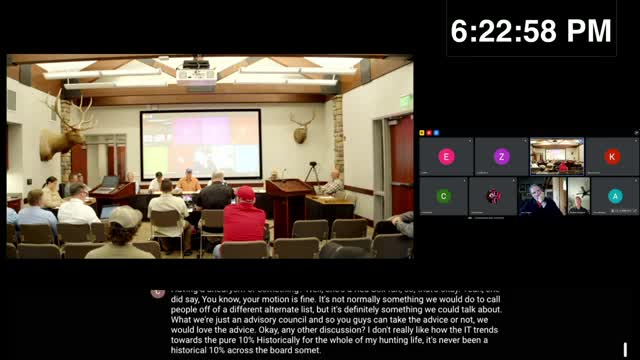Utah wildlife board approves elk permit recommendations amid nonresident tag debate
April 11, 2025 | Utah Wildlife Board, Boards and Commissions, Organizations, Utah Executive Branch, Utah
Thanks to Excel Chiropractic and Scribe from Workplace AI , all articles about Utah are free for you to enjoy throughout 2025!

This article was created by AI using a video recording of the meeting. It summarizes the key points discussed, but for full details and context, please refer to the video of the full meeting. Link to Full Meeting
The discussion began with a review of the current system for issuing nonresident tags, particularly for mountain goat hunting. Participants expressed apprehension about combining hunting units to create nonresident tags, which some argued could disadvantage resident hunters. One member noted that while they do not oppose nonresident hunters, the current approach could lead to a scarcity of permits for residents, especially in light of limited overall tag numbers.
A significant point raised was the practice in other states, where nonresident tags are not issued if the total number of tags is insufficient. This comparison prompted concerns about Utah's method of aggregating tags from different units to meet a 10% allocation for nonresidents, which some members felt was misleading if the actual percentage was lower.
Following this discussion, a motion was made to support the recommendations presented, with an amendment to allow the division to call alternate hunters from the ram and ewe lists in response to disease events affecting wildlife populations. This motion was seconded and passed unanimously.
The meeting then transitioned to item number seven, which focused on elk permit recommendations. The division provided an update on the revised statewide elk plan, noting improvements in age objectives and the overall health of elk populations in certain units. The recommendation to maintain the current number of general season elk permits at 750 was presented, reflecting the ongoing management strategy aimed at sustaining elk populations.
In conclusion, the meeting underscored the complexities of managing hunting permits in Utah, balancing the interests of resident and nonresident hunters while addressing wildlife health concerns. The next steps will involve implementing the approved recommendations and monitoring the outcomes of the revised elk management plan.
Converted from DWR RAC Meeting - Central Region 04/10/2025 (re-post) meeting on April 11, 2025
Link to Full Meeting
Comments
View full meeting
This article is based on a recent meeting—watch the full video and explore the complete transcript for deeper insights into the discussion.
View full meeting
